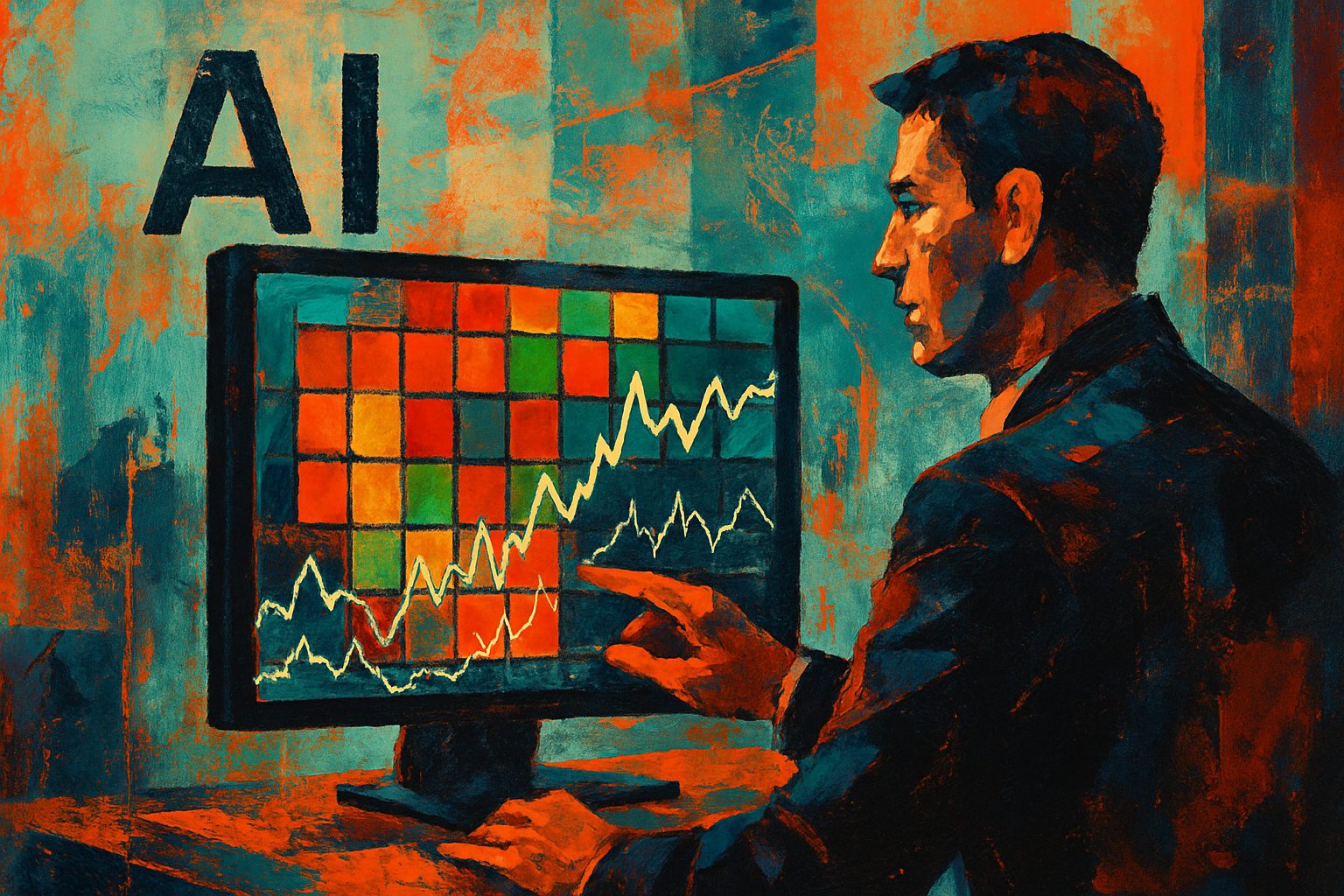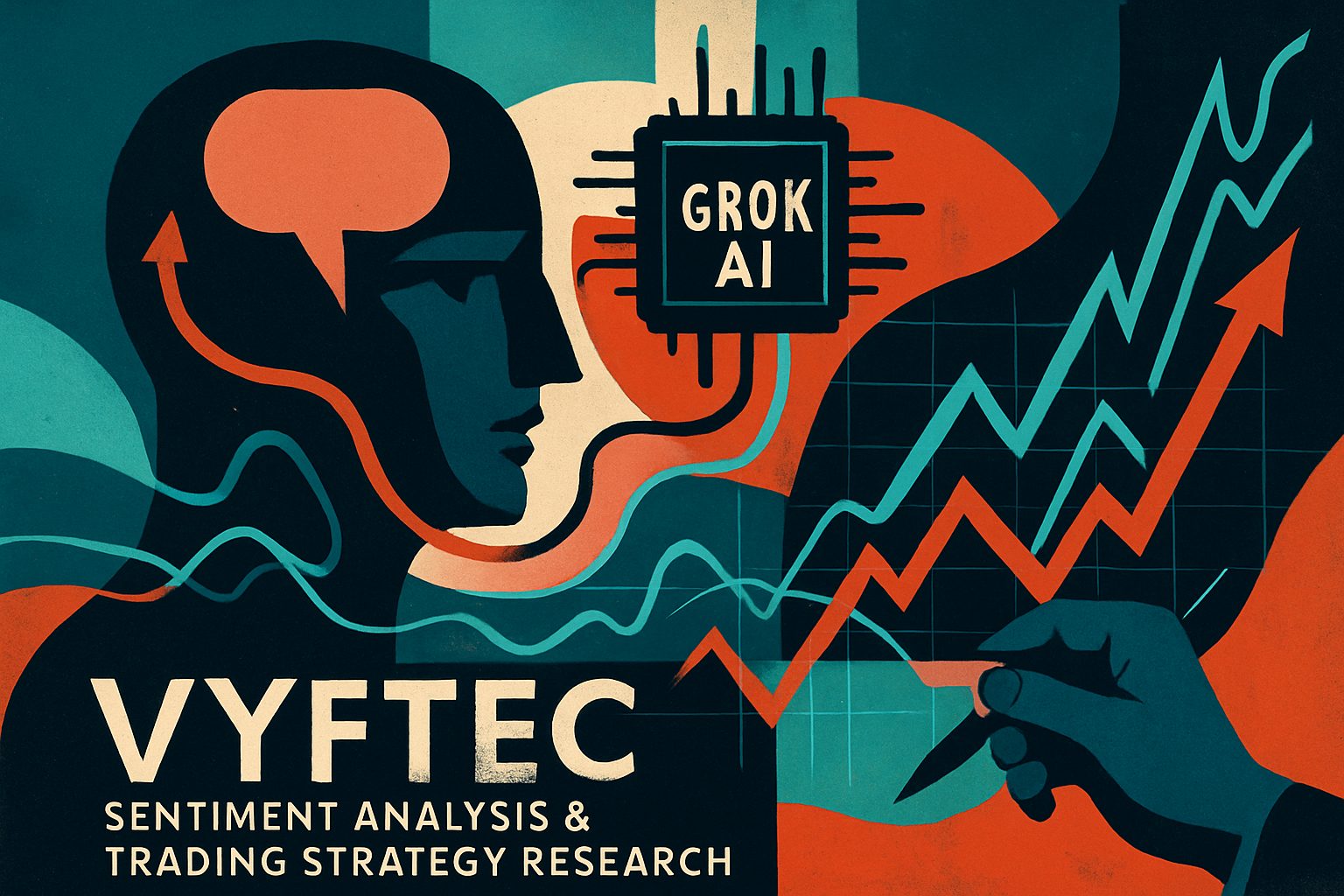
Unlocking Trading Success: How AI Automation Transforms Heatmap Analysis
In the dynamic realm of trading, the ability to make swift, informed decisions can make all the difference. This article uncovers how AI automation is revolutionizing the analysis of heatmaps, enabling traders to identify the most stable and promising parameters for risk-free strategies.
In the fast-paced world of financial trading, where split-second decisions can yield substantial gains or catastrophic losses, the quest for stability and predictability has never been more critical. As artificial intelligence (AI) continues to evolve, it presents an unprecedented opportunity to revolutionize the way traders approach risk management and strategy optimization. This article delves into the intricate intersection of AI automation and trading strategies, specifically focusing on how advanced algorithms can be harnessed to sift through vast heatmap data, identifying the most stable, risk-free, and promising parameters amidst the chaos of brute-forced trading approaches.
Through a comprehensive analysis grounded in nine reputable sources, we will explore the methodologies and technologies that enable AI to not only streamline the identification process but also enhance decision-making accuracy. By dissecting the mechanics of heatmaps and their role in visualizing complex data relationships, we aim to provide valuable insights into the practical applications of AI in trading. Readers can expect to gain a deeper understanding of the potential benefits AI offers in navigating risk and optimizing trading parameters, ultimately empowering them to make more informed, data-driven decisions in their trading endeavors.

Thesis
The landscape of trading strategies is rapidly evolving, predominantly driven by advancements in Artificial Intelligence (AI) and automation technologies. This literature review aims to synthesize key findings and methodologies from existing research on AI automation in trading, highlighting current techniques, their effectiveness, and existing gaps within the field.
Key Findings
1. Types of AI Tools
The literature identifies several prominent AI tools used in trading, each with unique functionalities and target audiences:
-
Pattern Recognition and Prediction Engines: Tools like Tickeron utilize real-time AI pattern recognition to generate trade signals. They analyze historical data to forecast price movements and provide a “Confidence Level” for predictions.
-
Automated Trading Bots: Platforms such as TrendSpider automate technical analysis, enabling users to backtest strategies without coding. These bots can execute trades based on predefined conditions.
-
Sentiment Analysis Tools: Tools like TradeEasy AI focus on gathering and analyzing financial news to gauge market sentiment, providing contextual insights rather than direct trading signals.
2. Methodologies
The methodologies employed in AI trading strategies can be broadly categorized into:
-
Quantitative Analysis: Many platforms leverage statistical methods to analyze market data and generate trading signals. For example, Trade Ideas employs AI algorithms that run extensive backtests on various trading strategies to identify high-probability trading signals.
-
Machine Learning: Advanced methods such as supervised learning are used to train models on historical market data, allowing systems to predict future price movements. Research highlights the use of reinforcement learning in optimizing trading strategies, as noted in works like Artificial Intelligence in Financial Markets.
-
Backtesting Frameworks: Tools like QuantConnect provide comprehensive environments for users to develop, backtest, and deploy trading strategies using open-source engines.
3. Effectiveness and Performance
Various studies have shown that AI-driven trading strategies can outperform traditional methods in specific conditions:
-
Market Conditions: AI strategies tend to excel in trending markets but may underperform in sideways or volatile markets. Research indicates that the effectiveness of strategies like momentum trading is contingent upon prevailing market conditions.
-
Risk Management: AI tools are increasingly being utilized to optimize risk management and portfolio allocation. Automated systems can adapt to changing market environments more swiftly than human traders, improving overall performance.
4. Transparency and Trust
While AI tools offer advanced capabilities, issues surrounding transparency and trust remain prevalent:
-
Black-Box Models: Many AI systems operate as “black boxes,” making it challenging for traders to understand the underlying decision-making processes. Tools like Tickeron address this by providing audited performance histories for their AI models.
-
User Confidence: The effectiveness of AI trading tools often hinges on user trust in the system’s predictions. Features like confidence levels and historical performance transparency are critical for building this trust.
Gaps in AI Automation Usage
Despite the advancements, several gaps exist in the current literature and practice:
-
Adaptability to New Market Conditions: Many AI models are trained on historical data and may struggle to adapt to unprecedented market conditions, such as sudden economic downturns or geopolitical events.
-
Integration with Fundamental Analysis: While technical analysis is well-covered, the integration of AI with fundamental analysis remains underexplored. Combining both approaches could lead to more robust trading strategies.
-
Regulatory and Ethical Considerations: As AI in trading continues to evolve, there is a need for guidelines to ensure ethical use and compliance with financial regulations. The potential for algorithmic trading to exacerbate market volatility raises questions about the responsibility of AI developers and traders.
-
User Accessibility: Many advanced AI systems require a certain level of technical expertise, limiting their accessibility to a broader audience. Tools that simplify the user experience while retaining functional robustness are needed.
Conclusion
The integration of AI and automation in trading strategies presents a transformative opportunity for traders across the spectrum. While existing tools and methodologies show promise in enhancing trading effectiveness, challenges remain in terms of transparency, adaptability, and user accessibility. Future research should focus on developing hybrid models that incorporate both technical and fundamental analysis, alongside addressing ethical considerations and improving user experience.
For further reading and resources on AI tools in trading, refer to the comprehensive guide on top AI tools for traders.
In the realm of algorithmic trading, parameter brute-forcing has emerged as a popular technique for optimizing trading strategies. This process involves systematically testing combinations of parameters to identify the most profitable settings. This analysis will evaluate the current methods of parameter brute-forcing, weighing their pros and cons, to determine the most effective approach.
Thesis Statement
Brute-forcing methods for parameter optimization in trading strategies vary significantly in terms of efficiency, accuracy, and computational demands. A structured comparison of these methods will reveal their strengths and weaknesses, ultimately guiding traders in selecting the most effective approach for their specific needs.
Overview of Brute-Forcing Methods
The primary methods for parameter brute-forcing in trading strategies include:
- Brute Force Optimization
- Grid Search
- Random Search
- Bayesian Optimization
1. Brute Force Optimization
Definition: This method tests every possible combination of parameters within a defined range to find the most profitable outcome.
Pros:
– Comprehensive: Guarantees finding the optimal solution if computational resources are sufficient.
– Simplicity: Easy to implement and understand.
Cons:
– Computationally Intensive: Requires significant processing power and time, especially with a large parameter space.
– Inefficiency: Often impractical for real-time applications due to high temporal complexity.
2. Grid Search
Definition: Similar to brute force optimization, grid search tests a predefined set of values across multiple parameters in a grid-like structure.
Pros:
– Structured Approach: Reduces the complexity of the search space compared to random testing.
– Easy to Implement: Many libraries (e.g., Scikit-learn) provide built-in support.
Cons:
– Fixed Resolution: The choice of grid resolution can lead to missing optimal parameters if they lie between grid points.
– Time-Consuming: Still requires extensive computation, particularly in high-dimensional spaces.
3. Random Search
Definition: This method tests random combinations of parameter values instead of all possible combinations.
Pros:
– Efficiency: Often finds good solutions faster than grid search, especially in high-dimensional spaces.
– Flexibility: No need to define a grid, allowing for dynamic exploration of parameter space.
Cons:
– No Guarantee: Does not guarantee finding the optimal solution.
– Variance in Results: Multiple runs can yield different results due to randomness.
4. Bayesian Optimization
Definition: This probabilistic model-based approach uses past evaluation results to identify promising areas in the hyperparameter space.
Pros:
– Efficiency: Requires fewer evaluations to find optimal parameters compared to brute force or grid search.
– Adaptive: Focuses on areas of the parameter space that are more likely to yield better results.
Cons:
– Complexity: Requires a deeper understanding of probabilistic modeling and may involve longer initial setup.
– Computational Cost: Can be expensive in cases where the cost of evaluating the objective function is high.
Comparative Analysis
Here’s a structured comparison of the methods discussed:
| Method | Completeness | Efficiency | Complexity | Pros | Cons |
|---|---|---|---|---|---|
| Brute Force | Guaranteed | Low | Low | Simple and exhaustive | Very slow and resource-intensive |
| Grid Search | Guaranteed | Medium | Low | Structured and straightforward | Fixed resolution can miss optimal values |
| Random Search | No guarantee | High | Low | Fast and flexible | Results can vary significantly |
| Bayesian Optimization | No guarantee | High | High | Efficient with fewer evaluations | More complex and requires probabilistic understanding |
Conclusion
In conclusion, the choice of brute-forcing method for parameter optimization in trading strategies depends heavily on specific trading conditions and computational resources.
- For comprehensive searches where time and resources permit, Brute Force Optimization remains a solid choice.
- Grid Search is effective when a structured approach is desired but can miss nuanced optimal settings.
- Random Search provides a balance of efficiency and simplicity, particularly in high-dimensional spaces.
- Bayesian Optimization, while complex, is the most efficient for scenarios where evaluations are costly, yielding good results with fewer tests.
Ultimately, traders should select a method that aligns with their strategy requirements, resource availability, and complexity tolerance. For further reading on parameter optimization techniques, see [Medium’s exploration of Brute Force Optimization](https://medium.com/trading-bots-code/parameter-optimization-brute-force-optimization-auto-optimization-1-d
Vyftec – AI-Driven Trading Insights
Unlock the power of AI to automate the analysis of heatmaps, identifying the most stable and promising parameters for your trading strategies. Experience Swiss precision in technology consulting—let’s transform your trading success together!
📧 damian@vyftec.com | 💬 WhatsApp


